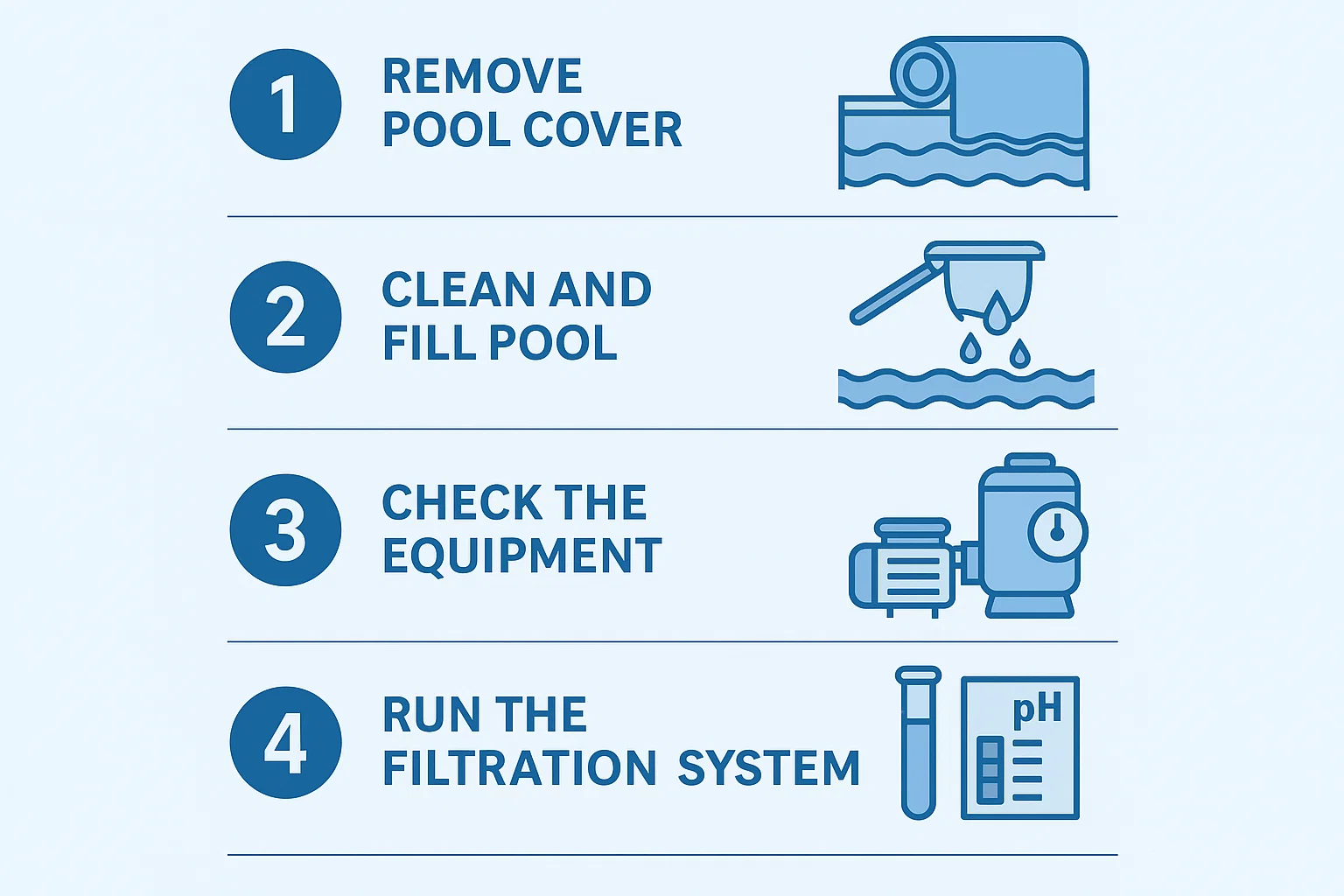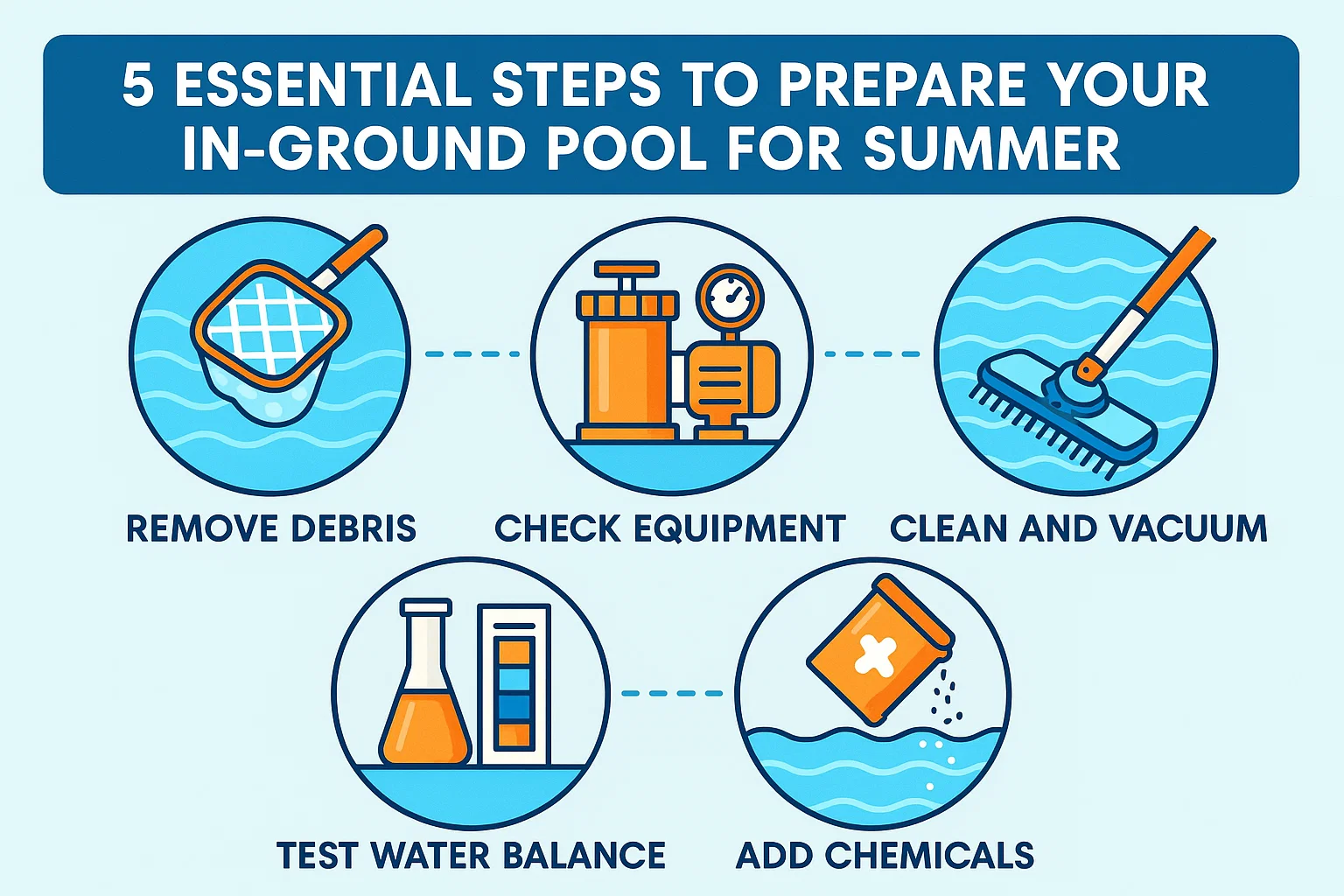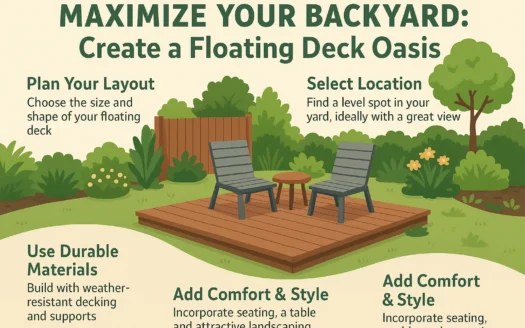5 Essential Steps to Prepare Your In-Ground Pool for Summer

5 Essential Steps to Prepare Your In-Ground Pool for Summer
Spring brings excitement for pool owners, especially those in colder climates who closed their pools for winter. As temperatures rise, it’s time to prepare your pool for swimming season. Follow this step-by-step guide to properly reopen your pool.
Step 1: Clean and Remove Your Pool Cover
Begin by cleaning your pool cover’s surface to prevent debris from falling into the water during removal. For solid covers with accumulated water:
- Pump out stagnant water using a wet-dry shop vacuum or specialized pump
- Clean while the cover remains stretched across the pool to prevent mold growth
For mesh covers, simply rinse before removal. For anchor-style covers:
- Rinse with a hose
- Gently scrub with a soft bristle brush if needed
- Never use a pressure washer
After cleaning, dry the cover completely before folding and storing it in a clean, dry area.
Step 2: Reinstall Plugs and Fittings
Assuming your pool was properly winterized, you’ll need to:
- Remove winterizing plugs from return lines
- Take out the ice compensator from the skimmer
- Evacuate any antifreeze from the skimmer line
- Replace all return fittings
- Reinstall pump and filter plugs
Step 3: Refill Your Pool
After completing the previous steps:
- Check that the water level reaches halfway up the skimmer
- Use a garden hose to add water if needed
Step 4: Prepare Your Filtration System
With operational lines and proper water level:
- Inspect the pump O-ring for cracks (replace if necessary)
- Lubricate new O-rings with silicone-based lubricant
- Fill the pump pot with water and replace the lid
- Turn on the pump and check for proper water circulation
- Monitor the filter pressure gauge
If you encounter issues with water movement or pressure, check for suction leaks and tighten connections as needed.
Step 5: Balance Your Pool Chemistry
After your filtration system runs for 24 hours:
- Test and adjust pH levels (ideal range: 7.4-7.6)
- Check alkalinity (should be 80-120 ppm)
- Measure calcium hardness (200-400 ppm for concrete pools)
- Add chlorine or other sanitizers as needed
Regularly test and adjust chemicals during the first week of operation to establish proper water balance.




